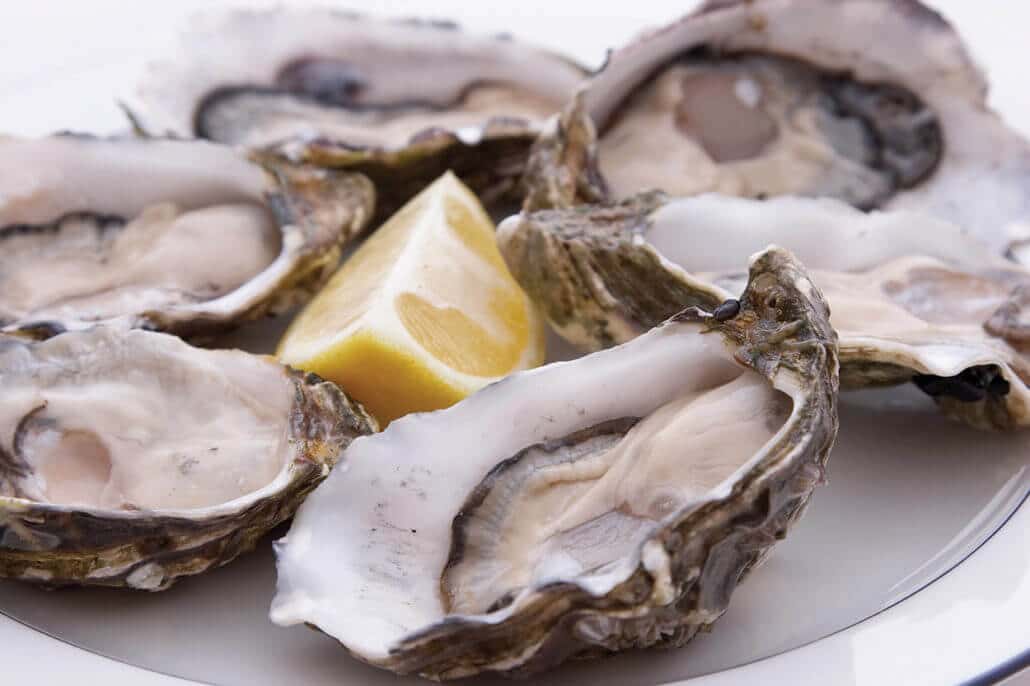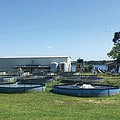Share this Post
No matter how you shuck it, oysters are polarizing. For all those who consider raw oysters a delicacy, just as many are turned off by slurping a live sea creature from its shell. But the tide is shifting, and oysters are getting more love now than ever before.
Partly, it’s because raw bars are trendy—oysters on the half shell are all over restaurant menus and Instagram feeds. Another reason is because oysters are safe to eat year-round. Yet another is likely because the average oyster eater is getting younger, which syncs with Raleigh’s booming population growth as jobs in tech and research sectors attract young working professionals.
“When you combine the availability of local, fresh and sustainably-harvested oysters with the rapidly growing food trend of raw bars, it creates a niche growth area for restaurants,” says Lin Peterson, co-founder of Raleigh-based Locals Seafood, which sources North Carolina seafood—including wild and cultivated oysters—exclusively. And, with modern, commercial oyster farming and refrigeration methods, you can forget the rule about eating them only in months containing “r,” though it still applies to wild oysters.
In Raleigh, 42nd Street Oyster Bar, founded in 1987, was first on the scene and traditionally catered to the legislative crowd. Though the restaurant remains true to those roots, executive chef Joe Rohrer is glad to see places like St. Roch Fine Oysters + Bar and The Cortez Seafood + Cocktail opening. All three now cater to a shifting demographic of discerning diners with diverse palates.
“When I moved here, downtown was a ghost town,” Rohrer says. “There were a couple of dive bars and that was it. Now you can eat at a different restaurant downtown every day for months and find something good and unique.”
Indeed, Raleigh is cementing a reputation for its vibrant culinary scene, appearing on list after list of top places for foodies.
“Now, we can specialize in North Carolina oysters and showcase the sea-to-table recognition that Raleigh deserves,” says Oscar Diaz, executive chef at the Cortez.
So, what makes North Carolina oysters so special? It’s our merroir, or marine environment.
“A lot of people don’t know that all Atlantic coast oysters are the same species—Eastern,” says Locals’ Peterson. “Just like wines can be made with the same variety of grapes, [oysters] take on different flavors depending on where they’re grown.”
As filter feeders, oysters absorb what’s in their environment and salinity; vegetation and water temperature can all affect how they taste. Oysters grown closer to the ocean taste saltier, whereas those harvested from river beds are less briny. If a certain strain of algae is growing nearby, oysters can taste oniony, like wild ramps; if it’s a particular blue algae bloom, oysters can develop green grills and a truffle-like taste, as with prized Cedar Island Selects.
Whether you already love them or are bivalve-curious, there’s no better time to find oysters locally. Here’s where, when and how to enjoy them and what to sip while you slurp.
42nd Street Oyster Bar
When Rohrer started at 42nd Street a decade ago, North Carolina oysters were scarce. Now, he can choose from a dozen cultivated varieties, including sweet, buttery Chadwick Creeks, or Carolina Pearls, briny upfront with a sweet finish. Rohrer’s favorite wild oysters include briny-but-buttery Stump Sounds and Lucky Suckers, whose sweet finish make them perfect for oyster newbies. (If raw oysters aren’t your thing, order steamed Virginia oysters.) A bone-dry white wine is a classic pairing or try a North Carolina craft beer, such as the citrusy Foothills Jade IPA. Enjoy $1 oysters during happy hour Monday through Friday from 5—7 p.m. at the bar and in the cocktail lounge.
St. Roch Fine Oysters + Bar
Growing up in New Orleans, owner and chef Sunny Gerhart always loved oysters but since he opened his own restaurant, he’s developed an affinity for North Carolina bivalves. His favorite? The Wild Pony, small and meaty with a beautiful, elongated shell. Roasted oysters are available too, a nod to Gerhart’s NOLA roots. Get them “collar’d,” with smoky collards, Tasso ham and chili flakes; “pimento’d,” with smoked pimento cheese and pickled jalapenos; or “BBQ’d,” with cayenne, butter and fresh herbs. Champagne is a sure bet, as is the crisp Muscadet. Oysters are $1 all night Tuesdays and every day from 5—6 p.m.
The Cortez Seafood + Cocktail
Diaz created the type of place he’d want to hang out post-shift, with oysters, rosé and ceviche. The Cortez offers a rotating roster of three North Carolina oysters, including medium-briny Pamlico Bounties and super briny Core Sounders. If you’re new to raw oysters, Diaz recommends trying your first with Tabasco. We’re convinced the rosé mignonette will convert anyone into an oyster lover. Or, try the “all dressed up” option, topped with finely diced bell peppers, cucumber and serrano peppers, and doused with lime juice, hot sauce and ceviche juice. Pair with the sparkling Lamberti Rosé. Get $1 oysters Tuesday through Sunday from 5—6 p.m. ■
Glossary
Locals Seafood’s Lin Peterson shares the lingo you need to order, slurp and savor oysters.
Brininess/Salinity: How salty the oyster tastes/how salty the water is where the oyster was harvested
Cup: Refers to the size and depth of the shell, indicating where or how the oyster was grown
Finish: The residual taste of the oyster, revealing additional flavors and clues to its merroir
Liquor: The naturally-occurring liquid (mostly sea water) surrounding the oyster meat inside the shell, expressing brininess
Merroir: Coined from terroir—a wine term used to describe how environment affects taste—for the marine environment. Water, nutrients, salinity, climate and ocean conditions all affect an oyster’s taste and texture
Mignonette:
A condiment made of minced raw shallots, vinegar and pepper, served with raw oysters to cut brininess
Naked:
An oyster eaten
without accompaniments
On-the-Half Shell: Oysters which have been shucked (removed from their shell) and served raw on one half of the shell on a bed of crushed ice; typically sold by the half dozen or dozen
Share this Post








